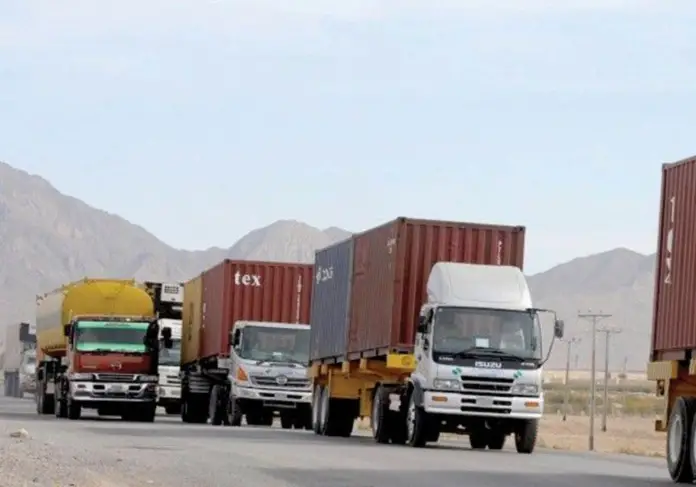A debate on significantly reducing regulatory costs will be timely. The financial support and facilitation provided by the government amid the pandemic were not adequate for all sectors, particularly the private sector. However, the evolving situation in Afghanistan is bound to impact the business climate in Pakistan, particularly that of Khyber Pakhtunkhwa (KP), which is at the front. Additionally, the global supply chain disruptions are also higher than anticipated and inflation could remain until mid-2022. It is therefore timely to identify what lessons from 2021 can be drawn that could lend more innovative approaches for 2022, which in turn also cut down the cost of doing business in KP and attract lucrative foreign investments.
In this backdrop, a look at some of the major trends and shortcomings across the province and to give a possible way forward is warranted.
Firstly, the provincial government is focusing on creating economic zones (EZs) which indeed will hinge the way forward for business development. But over the past three years city-level taxes, charges, levies, and other forms of payment have increased the cost of doing business in KP despite some business-friendly policy measures. The investment-friendly policies of the incumbent KP government and efforts of the Khyber Pakhtunkhwa Economic Zones Development and Management Company (KP-EZDMC) and Khyber Pakhtunkhwa Board of Investment and Trade (KP-BoIT) deserve appreciation, due to which the province is an inspiration for the business community. They are attracting foreign and local investments across the country and focusing on the growth of the province as a land of opportunities. Nevertheless, the government needs to focus more on certain barriers that can be addressed by legislative, regulatory, and policy actions. Innovative technological needs have arisen in the province where regulators have to reform and modernize in line with the international practices for inclusion in the global value chain.
Secondly, the growth of the informal economy due to indirect incentives is not part of the tax net. It leads to competitive advantages of direct and indirect costs enabling small firms to remain informal. The private sector is stagnant and there is no growth evident in the recent past. Post-pandemic facilitation by the government is welcoming but it is not accessible to relevant stakeholders, as the State Bank of Pakistan assessment on the tax bracket is questionable, where the support to SMEs is limited only to banking infrastructure. The automation part is being addressed in collaboration with the public-private partnership, for startups, where national incubation centers are supporting them in uplifting as an integral part of the GDP of the country. The ultimate solution lies in communication and coordination, which should be stronger and more transparent.
Thirdly, comparative advantages of various districts in KP are very vast and different as the China Pakistan Economic Corridor (CPEC) and the Afghan transit trade have opened new avenues of business and investment for the business community. The major gap identified in the Afghanistan market is the regional connectivity and its solution lies with the government line departments to work in collaboration with the private sector. Much focus should be directed towards the current economic policy framework as there is a need to focus on district-level or city-level business reform strategies.
Fourthly, the backbone of the economy should be on industrial coordination with an objective of one window and ease of doing business. Historically industrial policy is not suitable and is not effective. The previous policy was subjected to various implementation issues. However, there are hopes affiliated with the 2020 KP industrial policy. Local industries should be supported in terms of regulations as of neighboring regional partners. Long-term goals should be effective and result-oriented, but presently focus should be given to the short-term goals with a motive of sustainability. As of above, solution-based mechanisms and proposals of coordination are needed. Business associations and chambers of commerce can play a pivotal role in this matter.
Fifthly, the agenda of the single window should be to address the issues related to transit and trade. Pakistan single window (PSW) focus is on ease of doing business, where 75 departments are being connected to PSW comprising the majority of federal departments. The export side of KP has issues of logistics, security while on the automation side work is in progress. While the transit routes are nationally being aligned in a manner, where the exports sector issues are being addressed. The tax side of the provinces requires a stern hand solution with a single invoice leading to a better regulatory environment.
Sixthly, extensive research is required by engaging think tanks, academia, civil society, and the private sector with a single objective of discussing and thinking on the regulatory aspect of the ease of doing business. Research can create immense support to the business community by shedding light on sub-provincial business reforms. The recommendations should be floored to the government for creating a passage for ease of doing business. These steps can be pivoted to the way forward for bridging the policy gaps between the industry and the research body of the government resulting in an uplift of the regulatory mechanism.
Last but not the least, for an effective and everlasting impact research-based economic policy, should be implemented in the country and for this purpose, public-private coordination is of utmost importance. Policy and academic research should focus on identifying missing links and loopholes for the regulators. It will surely enhance the level of ease of doing business at the provincial level.







